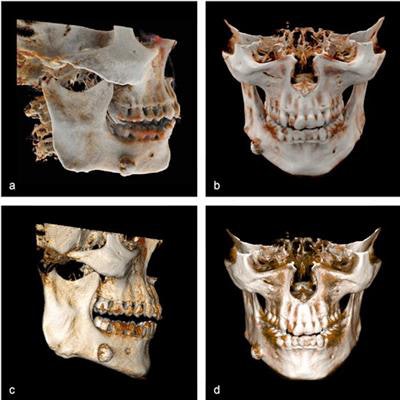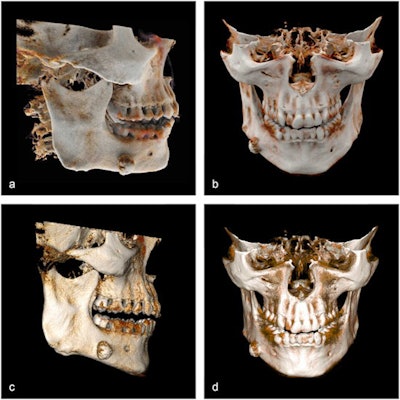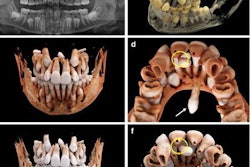
Although clinicians may prefer the photorealistic presentation of cinematic rendering, volume rendering also has discernible benefits in CT scans of the facial skeleton, according to research published online February 9 in Annals of Anatomy.
A team from the University of Zurich in Switzerland, led by Tobias Steffen, had 10 dentists view 10 cases of CT or conebeam CT exams reconstructed with cinematic rendering or volume rendering. After reviewing the images, the dentists subjectively rated the cinematic-rendered images higher.
But volume rendering also may produce images that are sharper and have better contrast.
"Assessing conventional multiplanar CT imaging together with [cinematic-rendering] and [volume-rendering] reconstructions would give additional, valuable visual information for the surgeon," the authors wrote.
In an exploratory study, the researchers used the same DICOM data to generate both volume-rendering and cinematic-rendering reconstructions. Cinematic rendering was performed using prototype software from Siemens Healthineers, while volume-rendered images were reconstructed using standard clinical postprocessing software (Impax PACS, Agfa HealthCare). To enable an equal comparison, the 10 cases were reconstructed in both techniques using steps of 10° to 20°.
 (A, B) Cinematic-rendering reconstruction of an exostosis of the right mandibular corpus, oblique-lateral view. (C, D) Volume-rendering reconstruction of the same dataset. Images and caption courtesy of Steffen et al and Annals of Anatomy. Licensed under CC BY 4.0.
(A, B) Cinematic-rendering reconstruction of an exostosis of the right mandibular corpus, oblique-lateral view. (C, D) Volume-rendering reconstruction of the same dataset. Images and caption courtesy of Steffen et al and Annals of Anatomy. Licensed under CC BY 4.0.The 10 dentists were asked to view the studies over three different sessions. In the first two sessions, the dentists were randomly shown a cinematic-rendered image or a volume-rendered image and asked to fill out a questionnaire rating image characteristics on a visual analog scale from 0 to 10 (best). They then viewed both images together in the last session and again filled out a questionnaire.
The researchers found statistically significant differences in scores for four parameters.
| Dentist scores for images reconstructed with volume vs. cinematic rendering | ||
| Volume rendering | Cinematic rendering | |
| Three-dimensionality | 6.93 | 8.03 |
| Contrast | 5.78 | 8.22 |
| Photorealism | 6.21 | 7.25 |
| Depth perception | 5.87 | 6.83 |
The researchers did not, however, find any significant difference in image interpretation accuracy between the two methods.
Cinematic rendering shows great potential in terms of depth perception and three-dimensionality for CT and CBCT data of the facial skeleton, the researchers concluded. However, volume rendering also offers benefits in surface sharpness and contrast.
"In order to get a first 3D-impression of a pathology, [cinematic rendering] seems highly suitable," the authors wrote. "Therefore, we see [cinematic rendering] as a tool to give additive value to conventional [volume-rendering] reconstructions."
The diagnostic value of 3D rotational cinematic-rendered images will need to be assessed in future studies, they noted.




















